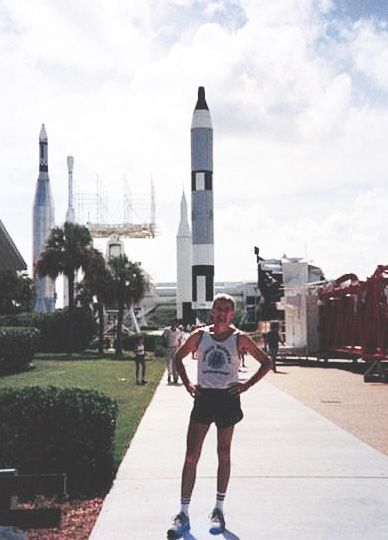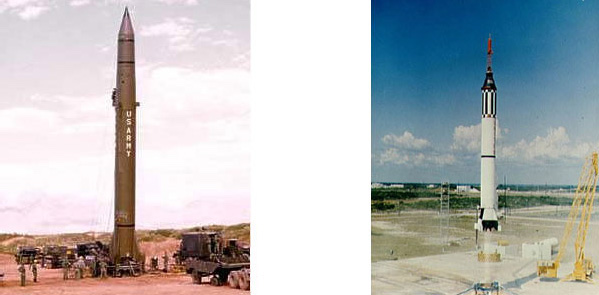- Published: Wednesday, April 06 2016 00:29
My name is Arthur Woods and I have been personally involved in humanity’s space program for almost 60 years. I am very pleased to have been invited to share my work and my experiences in the AstroArts program on the Astronomers Without Borders website.
I especially like the designation of “AstroArtists” that is being used on the website. I say that because I consider myself to be an astronautical artist in that my artistic work related to space has been mostly about art designed to be realized beyond Earth’s atmosphere and as such, it relies on the science and technology of astronautics in order to be realized. One could generalize that “astronautical art” is art that utilizes or integrates space technology for its realization and as such, it could be considered as a counterpart to “astronomical art” which is rather more dedicated to the visualization of outer space. Indeed, astronomy is about observing and studying what lies beyond Earth’s atmosphere and astronautics is about developing the means to travel to and navigate beyond Earth’s atmosphere.
In this post and in subsequent posts I plan to talk about:
- My personal background and early involvement in space activities eventually leading to my art-in-space projects.
- O.U.R.S. – the Orbiting Unification Ring Satellite, the OUR-Space Peace Sculpture, SEEDS projects and the OURS Foundation.
- The realization of the Cosmic Dancer and Ars Ad Astra: The 1st Art Exhibition in Earth Orbit projects on the Mir space station as well as other cultural projects and activities carried out in cooperation with the European Space Agency, the International Academy of Astronautics and with Leonardo – the Journal for the Arts, Science and Technology.
- The Space Option – a philosophical, cultural and political rationale for space development and related current activities and projects.
My story begins with my father, who, while serving in the U.S. Army, was part of the Redstone mobile launcher unit. The Redstone was the U.S. Army's first operational MRBM (Medium Range Ballistic Missile) and my father’s job was the production of liquid oxygen (LOX) in a mobile plant that accompanied the unit. Besides being a tactical weapon that could be fitted with a nuclear warhead, the Redstone missile was a key component of the early American space program. In its civilian role, the Redstone formed the base of the Juno1 launcher which placed the first American satellite Explorer-1 into orbit on January 31, 1958 and later, the Mercury-Redstone which sent Alan Shepard, America’s first astronaut, into sub-orbital space on May 5, 1961 and then its second astronaut Virgil “Gus” Grissom on July 21, 1961.
In 1959, when I was eleven years old, my father left the U.S. Army and moved our family to Merritt Island, Florida to look for work at nearby Cape Canaveral, the rocket test range for the US government which was originally used for testing captured German V-2 rockets. In the next years, I had the fortunate opportunity to personally witness the beginnings of the U.S. space program first-hand while living in the immediate vicinity of Cape Canaveral. Called the “space coast”, it was a paradise for someone my age. In addition to the space activities that commanded everyone’s attention, the pristine sub-tropical environment and its salt-water lagoons was also great for fishing and nearby Cocoa Beach, for surfing. I cannot imagine having a more exciting youth.
When President John F. Kennedy announced Project Apollo on May 25, 1961, that “landing a man on the Moon and returning him safely to the Earth" by the end of the decade would become a national goal, Merritt Island and the entire space coast quickly changed. The local population substantially increased in a very short time as people from all over the US moved to the space coast to join the Apollo program. As Cape Canaveral was inadequate to support the new launch facilities needed to launch the powerful Apollo Saturn moon rocket, NASA acquired the northern part of Merritt Island for their Launch Operations Center which later became the Kennedy Space Center including the VAB – Vertical Assembly Building and the Saturn Launch Complex 39.
The Apollo program was electrifying and contagious as everyone where I lived seemed to be involved in one way or another with the nation’s goal of going to the Moon. Each morning and evening long lines of cars made their way to and from the space center. My father worked for Air Products, Inc. which supplied the liquid propellants for the Mercury, Gemini and Apollo rockets. His brother also left the military a found a job at the space center working on the Atlas launcher. My older sister worked there as a technical draftsman. My college roommate quit his studies to work for a few years as a computer programmer when computer programs were still on punch cards. While I was a university student I twice held summer jobs at the space center during the summers of 1967 and 1968. I served as a document courier - basically human e-mail - with a secret security clearance which gave me access to almost every part of the space center.

Living only a few kilometers away from the space center, one was always aware when a new rocket launch occurred as the deep rumbling noise was an instant signal that caused everyone to run outside and watch the lift-off. Our school classes would be interrupted and everyone would go outside to watch the lift-off until the rocket disappeared in the sky on its trail of vapor. Of course, not all of the launches were successful and the occasional explosions in the sky were also spectacular.
I was present for all of the Mercury and Gemini manned launches and, on July 20, 1969, along many thousands of other spectators from around the country, I was there to cheer the launch of Apollo 11 and astronauts Neil Armstrong, Buzz Aldrin and Michel Collins on their way to the Moon. Like many others of my family and friends, I was also proud of my small contribution to humanity’s first steps to leave the planet and visit our moon. These were formative years and this unique experience obviously had a significant influence on my later career as an artist.
However, there was another side to that experience that has also influenced my thinking and my art over the years. In 1962 I lived through the Cuban Missile Crisis and, for someone living near a major launch facility located just 90 miles from Cuba, this experience – especially the drills in our school in case of a nuclear attack – was particularly memorable. During this crisis, humanity fortunately successfully avoided ending civilization and perhaps all life on Earth. Unfortunately, this lesson seems not to have been learned and now, some sixty years later, the world’s nuclear arsenals are being modernized and the nuclear powers appear to be once again set on a collision course.
Thus, living through this exciting and historical time, I also became aware very early of the “choice” for humanity that is inherent in the development of powerful new technologies – especially space technologies. I call this humanity’s “cosmic choice”. If one believes that other technological civilizations have appeared throughout the Cosmos, then they, too, must have faced a similar choice that confronts our species at this particular moment. Did they use their technology and knowledge to extend their civilization beyond their home planet in order to perpetuate their species, or did they misuse it and let their civilization and their future be destroyed?
This “cosmic choice” is symbolically represented in these two photos related to my personal experience - on the left, the Redstone as a ballistic missile with a nuclear warhead and, on the right, the Mercury-Redstone carrying the Alan Shepard to the edge of space.

From 1966 until 1970, I studied psychology, art and literature at Mercer University in Macon, Georgia. After graduation I was drafted to serve in the US military for two years and fortunately avoided direct involvement in the Vietnam War. After this duty, in 1972 I traveled to Santa Barbara, California where I began my art career with a series of surrealistic paintings. There I met my future Swiss wife who was touring the US. She invited me to visit her country and I arrived in the French part Switzerland where we were married in 1974. Immersion in a new cultural environment was very stimulating for my artistic development and I also had much time for reading and reflection.
As an artist, I wanted to create meaningful images about my views and understandings of life and I eventually turned to science to discover what scientists were thinking about when considering the nature of reality. Perhaps because CERN - the European center for particle physics research - was close by, I became interested in particle physics and the insights of physicists into the fundamental aspects of the universe on the microcosmic level which also seemed to me to approach a spiritual dimension. Applying these insights to my art, I subsequently developed a painting technique utilizing millions of points of color as a metaphor for the dynamic, inter-connected micro-macro universe that we all exist in. I first approached this in an abstract mode of expression which later evolved into a more lyrical, hyper-realistic painting style which I still pursue today.
My early experience with space activities and my deepening interest into the scientific understanding of the universe eventually led me to consider art works that could be realized in the space environment. In the mid-1980’s I initiated the first of several art-in-space or rather astronautical art projects which I will talk about in my next posts.
- Loved your wonderful story.
- Looking forward to your next post.









 Ann Lee
Ann Lee
Comments